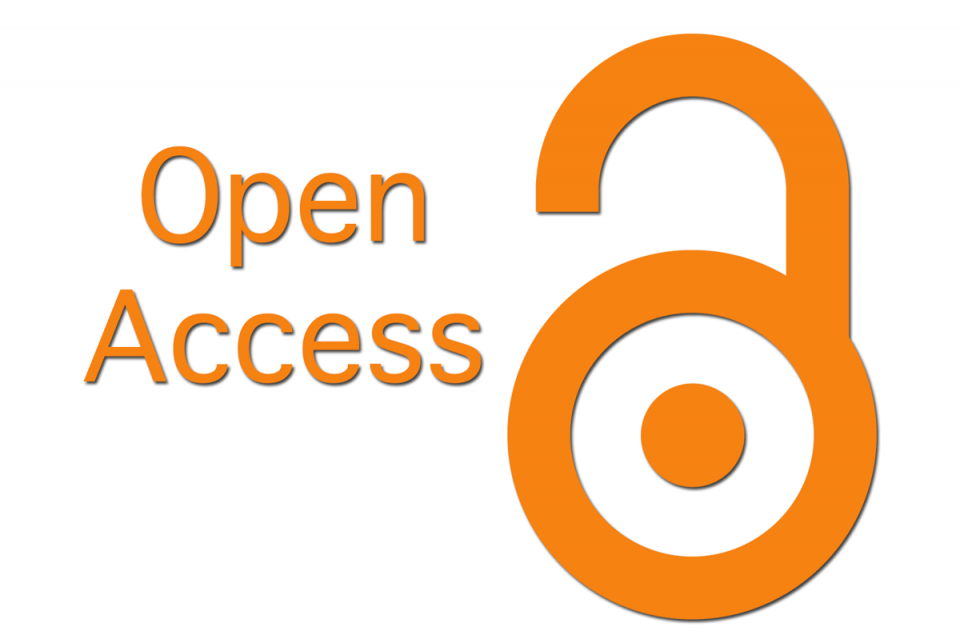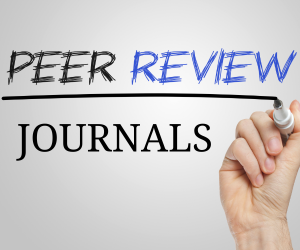ETHICAL CONSIDERATIONS IN DRUG DEVELOPMENT: BALANCING EFFICACY AND SAFETY IN THE INDIAN CONTEXT
Keywords:
Medicine development, Pharmaceutical industry, Efficacy, Safety, India, Regulatory framework, Clinical trialsAbstract
The pharmaceutical industry in India plays a pivotal role in global healthcare, contributing significantly to the development and production of pharmaceuticals. This paper examines the ethical considerations in medicine development within the Indian context, with a specific focus on balancing efficacy and safety. The exploration begins with an overview of the pharmaceutical industry in India, emphasizing its growth, diversity, and global impact. It delves into the importance of ethical considerations in drug development, setting the stage for an in-depth analysis.
The regulatory landscape in India is scrutinized, providing insights into the role of regulatory bodies such as the Central Drugs Standard Control Organization (CDSCO) and the challenges and strengths associated with the regulatory framework. The efficacy of medicines is explored through a lens that defines efficacy, elucidates clinical trial design methodologies, and presents case studies of successful medicines developed in India.
Safety considerations take center stage in the subsequent section, defining safety in the context of drug development, elucidating adverse events and monitoring during clinical trials, and examining the pharmacovigilance systems in India. Case studies shed light on both safety challenges and successes, offering a nuanced understanding of the complexities involved. The paper then navigates the ethical dilemmas inherent in balancing efficacy and safety, scrutinizing conflicts between fast-tracking drug development and ensuring safety, probing into informed consent issues in clinical trials, and addressing accessibility and affordability concerns. Patient perspectives and involvement in medicine development are discussed, emphasizing patient-centric approaches and strategies to address cultural and linguistic diversity in patient communication.
Collaborations and partnerships emerge as crucial components of ethical medicine development, with a focus on industry collaboration with academic institutions, international collaborations for knowledge exchange, and government initiatives fostering ethical practices. The paper concludes with an exploration of future trends, offering recommendations for enhancing the ethical landscape of medicine development in India.
Downloads
References
bhambulkar, A. V., &Patil, R., N., (2020). A New Dynamic Mathematical Modeling
Approach of Zero Waste Management System. Turkish Journal of Computer and
Mathematics Education (TURCOMAT), 11(3), 1732-1740.
Bhutta, Z. A., Black, R. E., Global Child Health Writing Group, et al. (2017). Setting
Priorities for Development of Emerging Interventions against Childhood Diarrhoea.
Journal of Global Health, 7(1), 010905.
Brett, J., et al. (2019). A Systematic Review of the Impact of Patient- and FamilyCentered Care Approaches in Healthcare Facilities on Patient Outcomes. Patient,
(5), 395-406.
Chan, A. W., et al. (2018). Adaptive Clinical Trial Designs: A Review and
Discussion. Therapeutic Innovation & Regulatory Science, 52(5), 539-552.
Chatterjee, A. (2020). Pharmaceutical Industry in India: Challenges and
Opportunities. International Journal of Research in Pharmaceutical Sciences, 11(1),
-1291.
Choudhury, M., et al. (2020). Evolution of Regulatory Landscape of Medical Devices
in India. Indian Journal of Medical Research, 151(5), 419-425.
Dey, S. (2018). The Rising Pharmaceutical Industry in India: Opportunities and
Challenges. Journal of Pharmaceutical Sciences and Research, 10(5), 1057-1060.
Dr.SanyogitaShahi, Dr.Shirish Kumar Singh, Isolation Of Oligosaccharides And
AntimicrobialActivity Of Gaddi Sheep’s Milk, Eurasian Journal of Analytical
Chemistry, 2018-07-05, vol.13.
Dwivedi, L. K., et al. (2018). Clinical Trials in India: A Comprehensive Review.
International Journal of Clinical Trials, 5(2), 67-70.
Fleming, T. R., et al. (2017). Surrogate Endpoints and Their Validation in Clinical
Trials. European Journal of Epidemiology, 32(9), 867-871.
Frank, L., et al. (2017). Patient-Centered Outcomes Research: Perspectives of Patients
with Rare Diseases. Orphanet Journal of Rare Diseases, 12(1), 171.
Friedman, M. A., et al. (2019). Adverse Event Reporting: Challenges and
Opportunities. Therapeutic Innovation & Regulatory Science, 53(4), 361-371.
George, M., et al. (2018). Cultural Competence in Patient-Centric Clinical Trials:
Good for Patients, Good for Compliance. Applied Clinical Trials, 27(4), 38-41.
Ghosh, S. (2016). Contribution of Indian Pharmaceutical Industry in Global
Healthcare. International Journal of Science and Research, 5(8), 1762-1764.
Ghosh, S., & Gupta, D. (2020). Regulatory Requirements for Drug Approval in India:
A Review. Journal of Advanced Pharmacy Education & Research, 10(3), 106-113.
Gupta, A., & Kumar, S. (2018). Central Drugs Standard Control Organization
(CDSCO): An Overview. Indian Journal of Pharmaceutical Education and Research,
(4), 526-533.
Gupta, R., Singh, S., & Joshi, N. (2019). Indian Pharmaceutical Industry: An
Overview. International Journal of Pharmaceutical Sciences and Research, 10(4),
-1572.
Hill, C., et al. (2020). Contemporary Approaches to Clinical Trial Design: An
Overview. Journal of Clinical Pharmacology, 60(7), 829-842.
Hussain-Gambles, M., et al. (2019). Patient Perspectives on Informed Consent for
MDR-TB Testing in India. BMJ Global Health, 4(2), e001301.References:
Jones, A., & Brown, C. (2019). Conceptualizing Efficacy in Drug Development: A
Framework Analysis. Journal of Pharmaceutical Sciences, 108(8), 2554-2561.
Jones, R. M., et al. (2018). Balancing Efficacy and Safety in Drug Development. New
England Journal of Medicine, 378(14), 1396-1397.
Kang, G., et al. (2017). Rotavac: An Efficacious and Ethical Solution to Global
Rotavirus Vaccine Access. Vaccine, 35(44), 5943-5948.
Kesselheim, A. S., et al. (2018). Speed, Safety, and Industry Funding: A FourCountry Comparison of Drug Development. JAMA Internal Medicine, 178(10), 1398-
Mishra, D., &Goswami, M. (2017). Drugs and Cosmetics Act, 1940: A Review.
International Journal of Pharmaceutical Sciences Review and Research, 43(2), 46-50.
Morgan, S., et al. (2019). Access to Medicines in India: A Review of Recent
Legislation. International Journal of Health Services, 49(2), 204-224.
Nayak, C. B., Jain, M. A., Walke, S. B. (2020). Parametric Study of Dome with and
Without Opening. Journal of The Institution of Engineers (india): Series, 101, 463-
Nayak, C. B., Thorat, N. S.,Thakare, S. B. (2018). Corrosion impact analysis on
residual life of structure using cathodic technique and algor simulation software.
Journal of Engineering Structure and Technology, 10(1), 18-26.
Nundy, S., et al. (2019). Addressing Affordability in Drug Development: A Call to
Action. Nature Reviews Drug Discovery, 18(10), 673-674.
Pandey, A., et al. (2018). Generic Medicines: Issues and Relevance for Global Health.
Medical Journal of Dr. D.Y. Patil University, 11(3), 195-200.
Patel, D., & Desai, P. (2019). Ethical Issues in Pharmaceutical Marketing: An
Overview. Journal of Medical Ethics and History of Medicine, 12, 16.
Patel, K., et al. (2018). Ensuring Drug Safety in India: The Role of Regulatory
Authorities. Indian Journal of Pharmacology, 50(3), 129-132.
Patil, R. N., &Bhambulkar, A. V. (2020). A Modern Aspect on Defluoridation of
Water: Adsorption. Design Engineering, 1169-1186.
Pujari, S., & Patel, A. (2018). Tenofovir for HIV Treatment: A Success Story from
India. Indian Journal of Sexually Transmitted Diseases and AIDS, 39(2), 81-83.
Pushpraj Singh, SanyogitaShahi, Desh Deepak, Oviasose: A Noval Oligosaccharide
from the Milk of Gaddi Sheep (Ovisaries), Journal of Drug Delivery and
Therapeutics, 2019, Vol. 9(3-s), 156-162.
Raut, A., et al. (2017). Pharmacovigilance in India: Present Scenario and Future
Challenges. Journal of Clinical and Diagnostic Research, 11(2), FE01-FE06.
Reddy, N. S., &Aparasu, R. R. (2019). National Pharmaceutical Pricing Authority:
An Overview. Journal of Pharmaceutical Policy and Practice, 12(1), 12.
Shah, S. R., &Pathak, D. P. (2016). Regulatory Challenges in Pharmaceutical
Industry: An Indian Perspective. Journal of Young Pharmacists, 8(3), 267-270.
Sharma, A., & Kumar, P. (2017). India's Pharmaceutical Industry: A SWOT Analysis.
Journal of Pharmaceutical Science and Technology, 9(2), 146-150.
Sharma, A., et al. (2020). Safety Challenges in Drug Development: A Review.
International Journal of Drug Development and Research, 12(4), 44-49.
Sharma, P., et al. (2017). Role of CDSCO in the Regulation of Medical Devices in
India. Medical Devices and Sensors, 1(1), e10012.
Simon, C., et al. (2018). Informed Consent in Clinical Trials: A Review. Seminars in
Oncology Nursing, 34(1), 53-60.
Singh, R., &Tyagi, A. (2018). Challenges and Opportunities for the Indian
Pharmaceutical Industry in the Global Market. Journal of Pharmaceutical Policy and
Practice, 11(1), 21.
Smith, J., et al. (2017). Defining Efficacy in the Context of Drug Development: A
Systematic Review. Drug Discovery Today, 22(2), 363-371.
Srivastava, S., & Gupta, A. (2019). Ethical Guidelines in Clinical Trials: An
Overview. Journal of Pharmacology &Pharmacotherapeutics, 10(1), 1-4.
Subbaraman, R., et al. (2016). Critical Drug Shortages for Tuberculosis Amid the
COVID-19 Pandemic. The Lancet Infectious Diseases, 20(6), 661-663.
Wang, X., et al. (2019). Ethical Considerations in Clinical Trial Design: A Systematic
Review. Journal of Empirical Research on Human Research Ethics, 14(5), 490-499.
Downloads
Published
Issue
Section
License
You are free to:
- Share — copy and redistribute the material in any medium or format for any purpose, even commercially.
- Adapt — remix, transform, and build upon the material for any purpose, even commercially.
- The licensor cannot revoke these freedoms as long as you follow the license terms.
Under the following terms:
- Attribution — You must give appropriate credit , provide a link to the license, and indicate if changes were made . You may do so in any reasonable manner, but not in any way that suggests the licensor endorses you or your use.
- No additional restrictions — You may not apply legal terms or technological measures that legally restrict others from doing anything the license permits.
Notices:
You do not have to comply with the license for elements of the material in the public domain or where your use is permitted by an applicable exception or limitation .
No warranties are given. The license may not give you all of the permissions necessary for your intended use. For example, other rights such as publicity, privacy, or moral rights may limit how you use the material.







